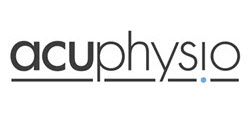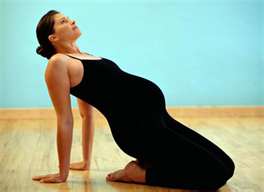The number of pregnant women who experience back pain is somewhere between 50 to 70 percent. The reasons for back pain vary from person to person, but the majority of back pain concerns can be accounted for by one of the following reasons:
- an increase in hormones
- a change of the body’s center of gravity
- gaining additional weight
- a decline in posture
- added stress
Over the last 40 years, the average age of women having their first child has risen from 21.4 to 25 years of age. Due to the fact that many women are juggling both the demands of pursuing higher education and the competitive nature of today’s workforce, more and more women are having their first child after the age of thirty five. As a result, many women becoming pregnant are less physically active in their daily lives. This decreased activity, along with the increasing national prevalence of a sedentary lifestyle, leaves an alarming number of women less prepared for the strenuous journey of carrying and delivering a baby.
How can physical therapy help relieve pain during pregnancy?
Additional weight, decreased posture, stress and control of the center of gravity are not independent from one another.
A change in your center of gravity affects your posture which causes the muscles to work harder. Increased exertion creates fatigue which leads to decreased motivation to be active. The absence of an athletic release often results in increased stress. Though it is difficult, the domino effect can be slowed greatly with the help of physical therapy.
Lower back pain is an all too common reality for many expecting mothers. As the uterus and baby grow, the mother's center of gravity moves forward. This shift increases the amount of force the muscles must generate for everyday support causing women to slump forward. Over time this poor alignment creates muscle tightness in the pectoral muscles, rolling the shoulders forward and creating increased stress on the muscles of the neck,
shoulders and mid-back. If these muscular factors are not addressed, these forces will ultimately be translated down to the low back, an area which is
already under a great deal of stress because it is supporting the increased center of gravity.
Additionally, exercise increases physical endurance and muscle strength, especially in the hips, back and abdomen. Improving these areas can prepare the body for the physically demanding event of delivering a baby, positioning oneself for a better labor experience. Finally, therapeutic exercise during pregnancy can assist the recovery after the delivery. It tones muscle which will improve metabolism, decrease the severity of fatigue, and assist in reclaiming your pre-pregnant weight.
There are no guarantees, but it is fair to expect your pregnancy and labor to go easier and possibly even quicker following any strength and flexibility enhancements. Although a few visits with your physical therapist is a good start, it is essential to incorporate home exercises into your physical therapy program. Your physical therapist is going to provide you with specific exercises that target what you need to make your pregnancy easier and even healthier. You can also rest assured that your physical therapist will guide you through proper usage of these exercises so that you can reap the most benefits.
Pregnancy is the ultimate strain on one’s body, and is a condition that physical therapy can intervene to lessen this strain. A proactive strength, flexibility and stabilization program can be very beneficial to preventing or decreasing the intensity of painful symptoms, thus making your pregnancy experience a more positive one.
By Jane Palmer

